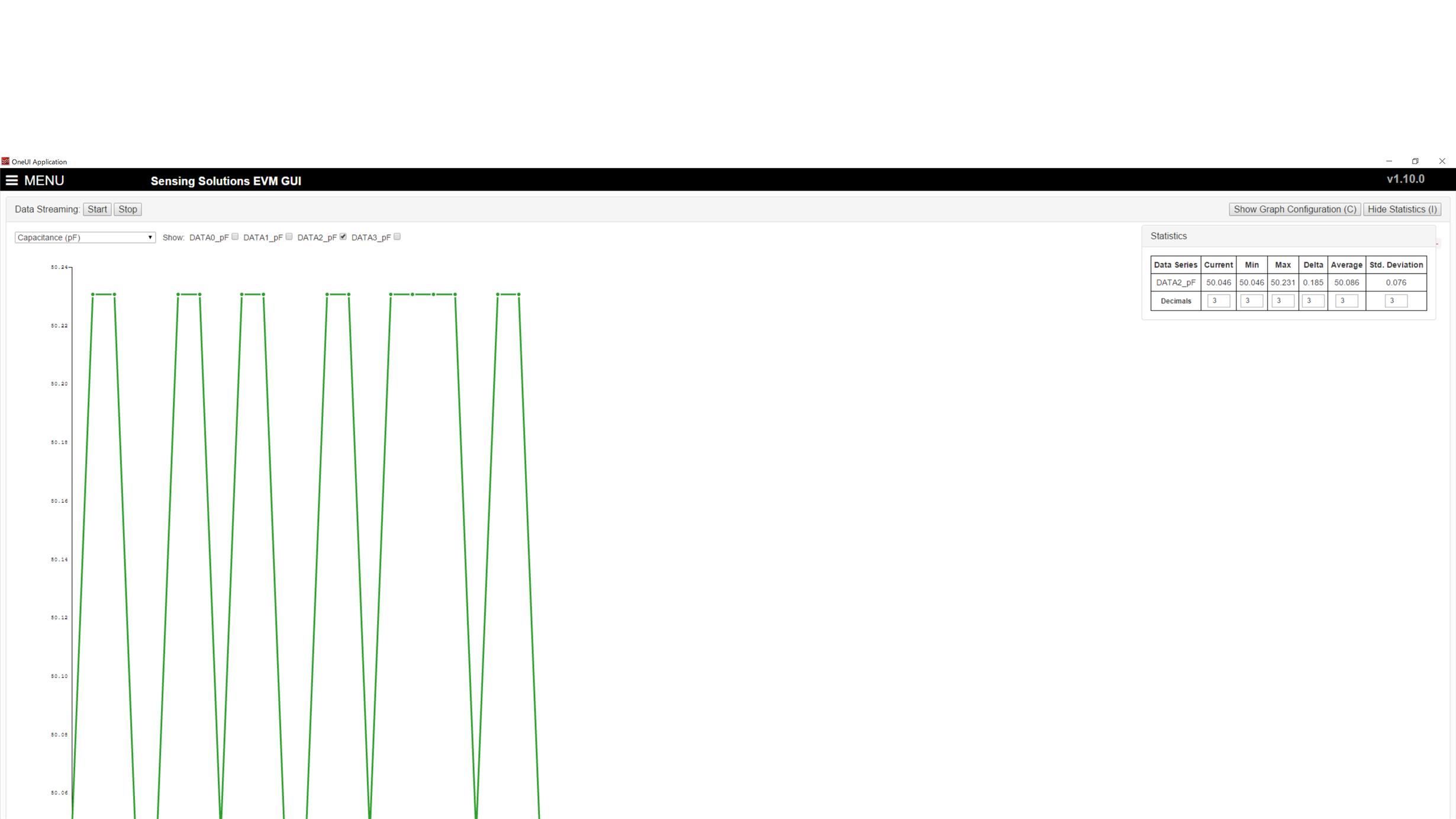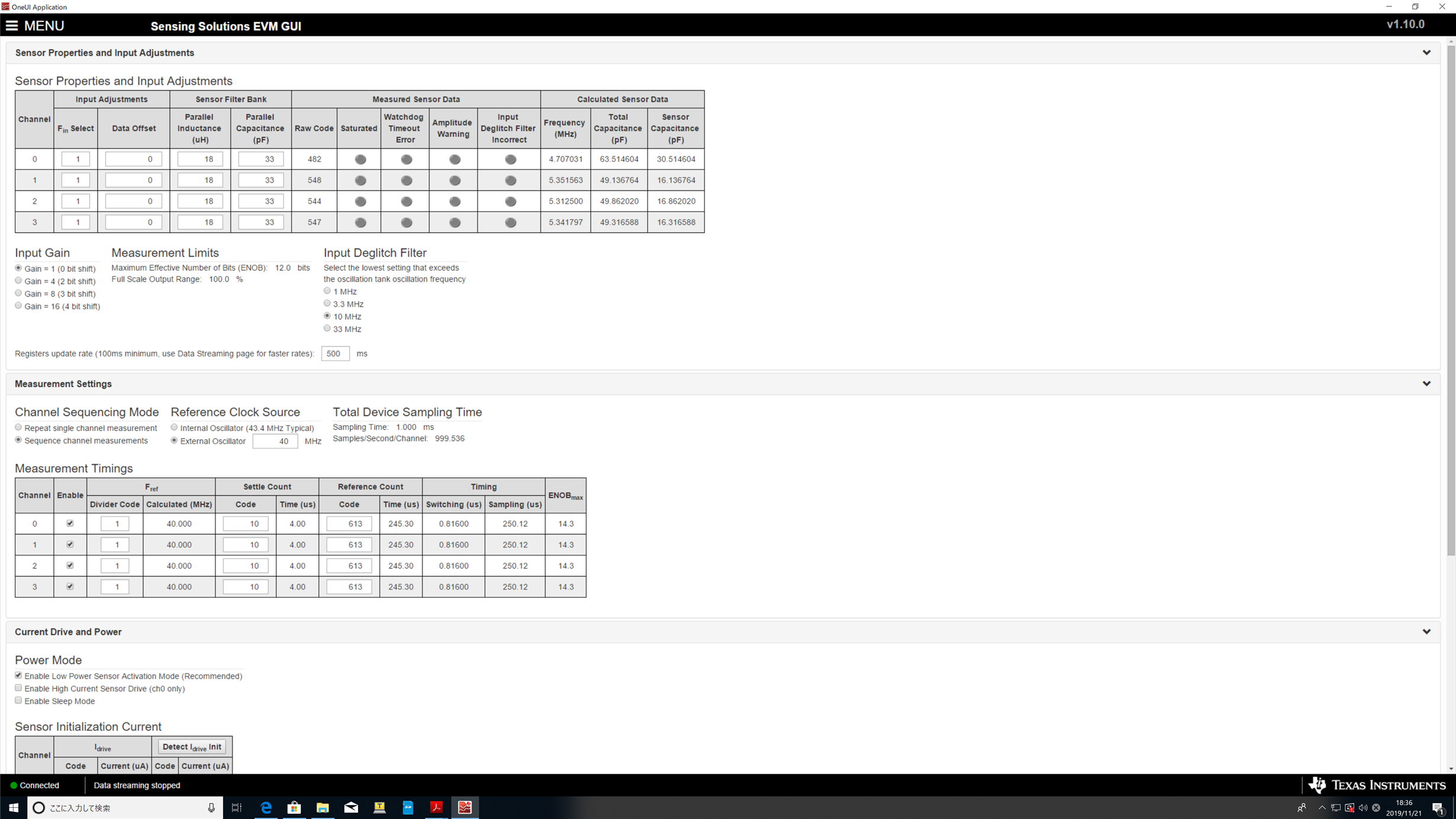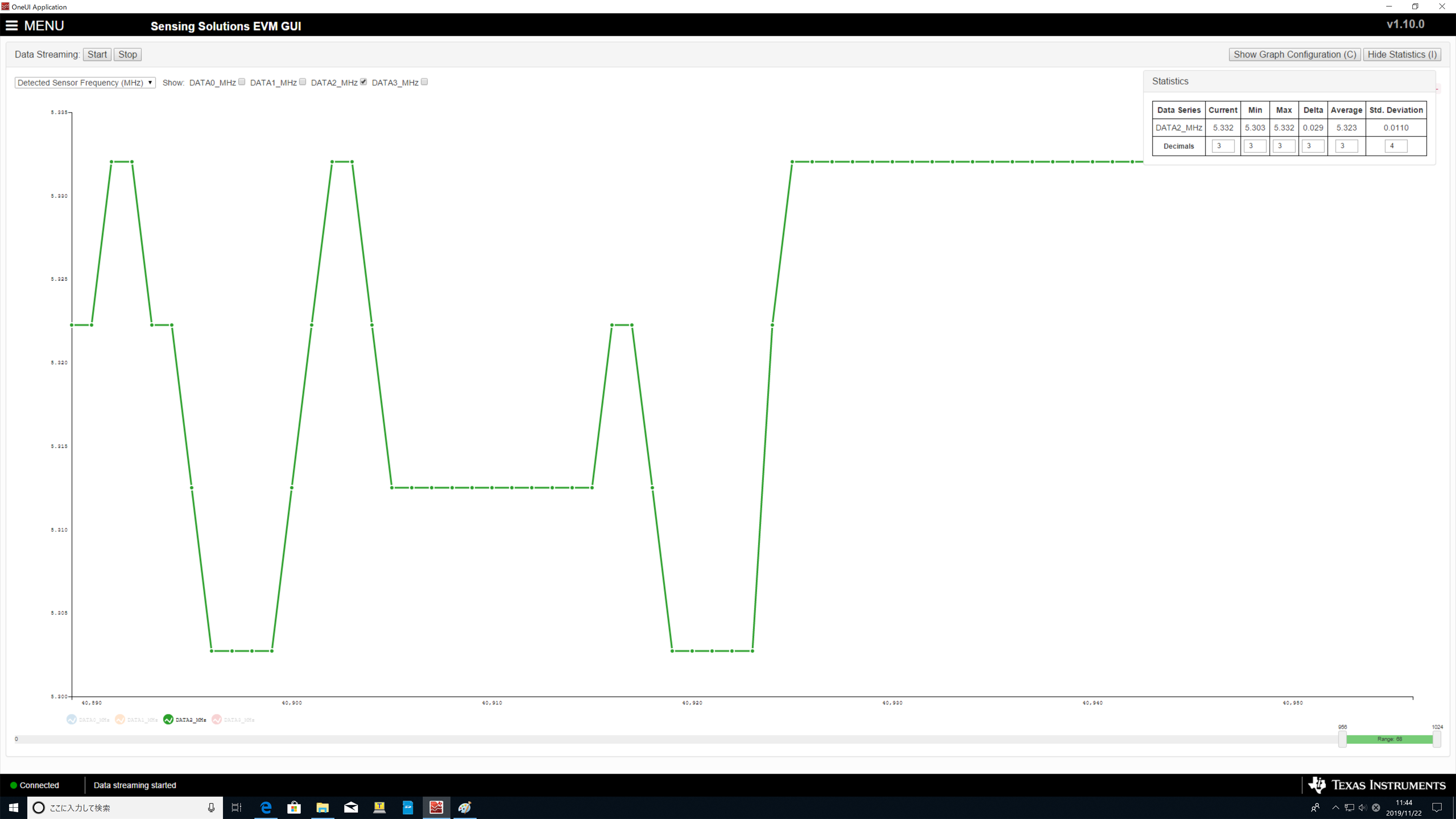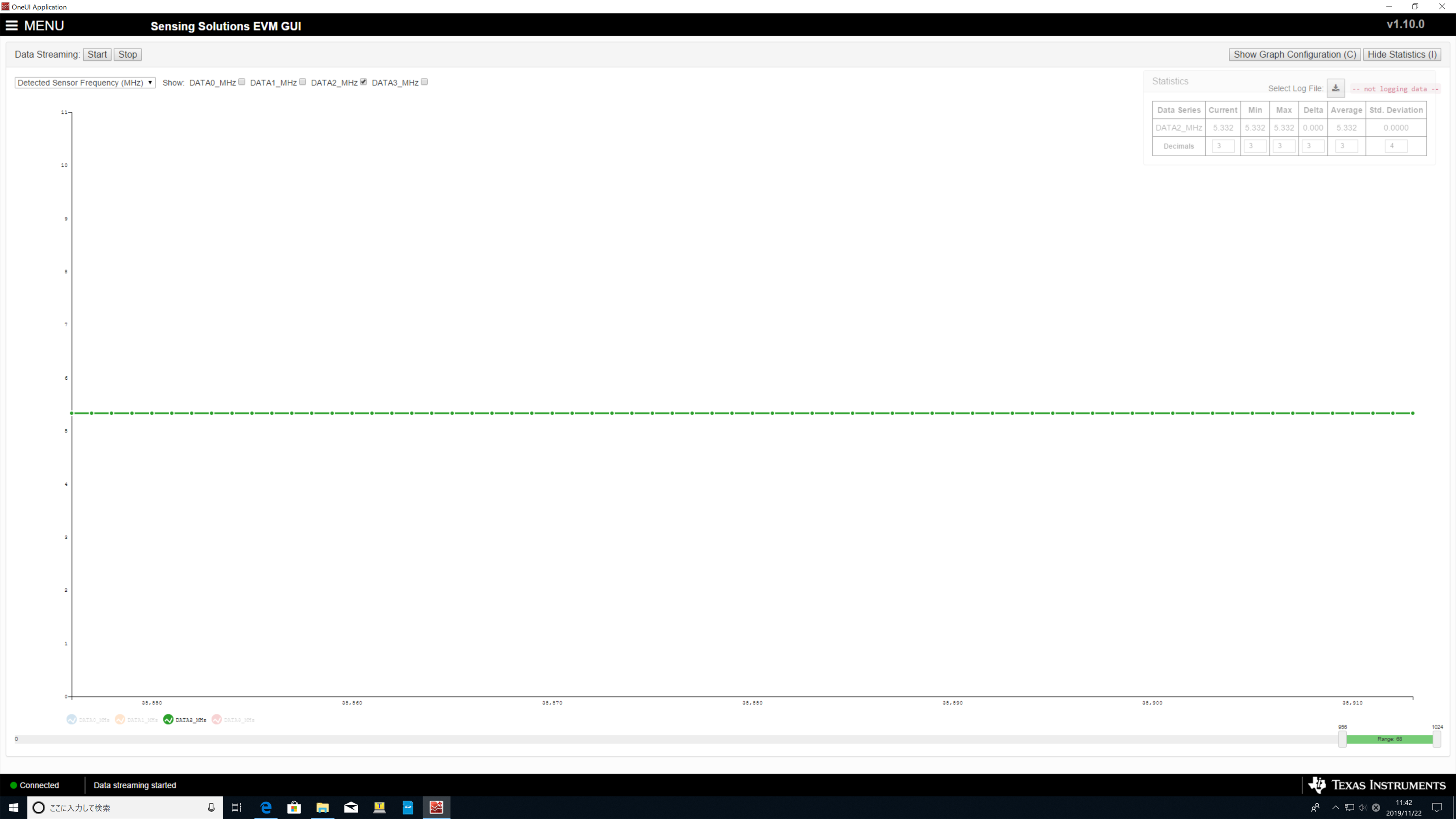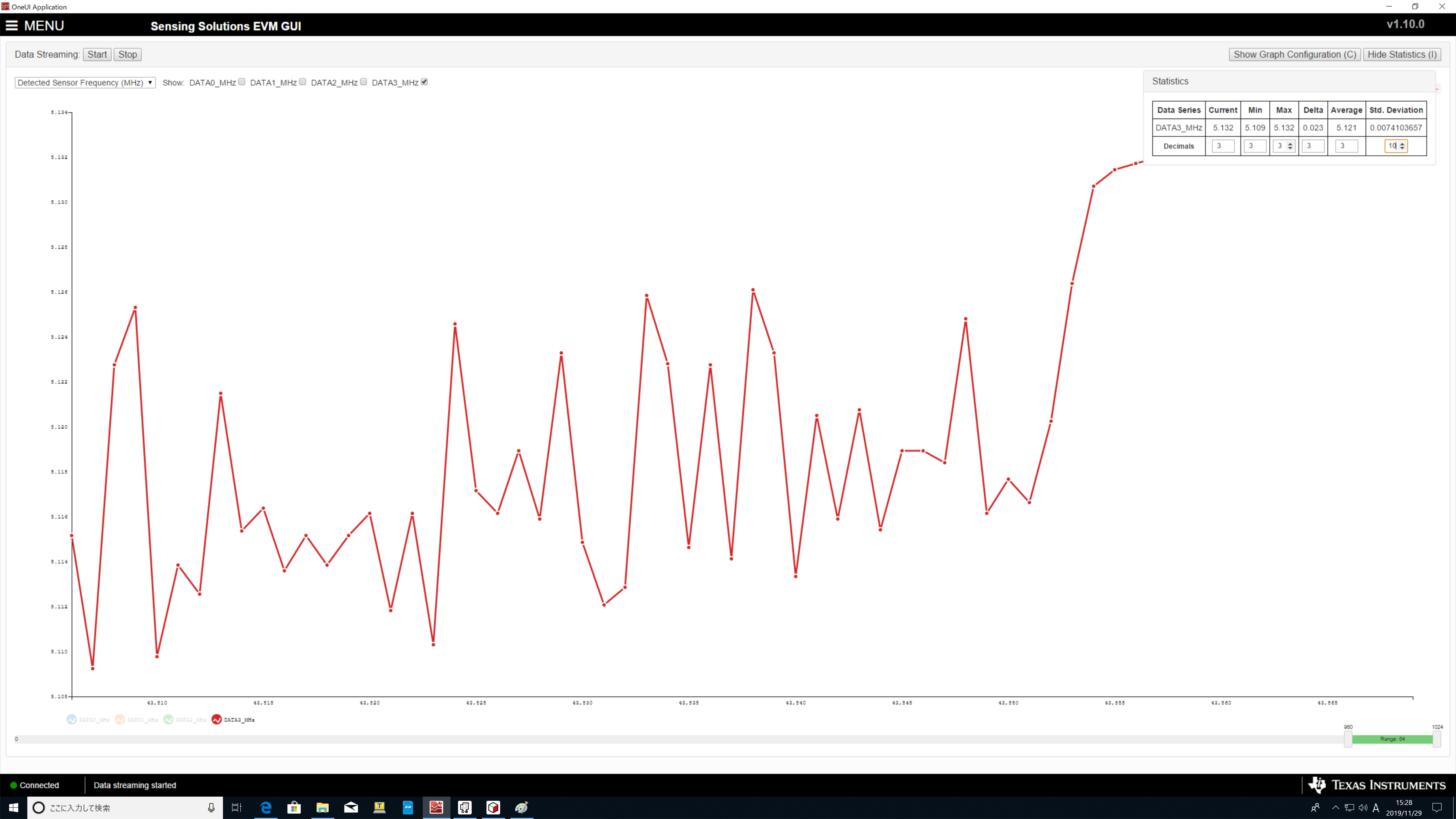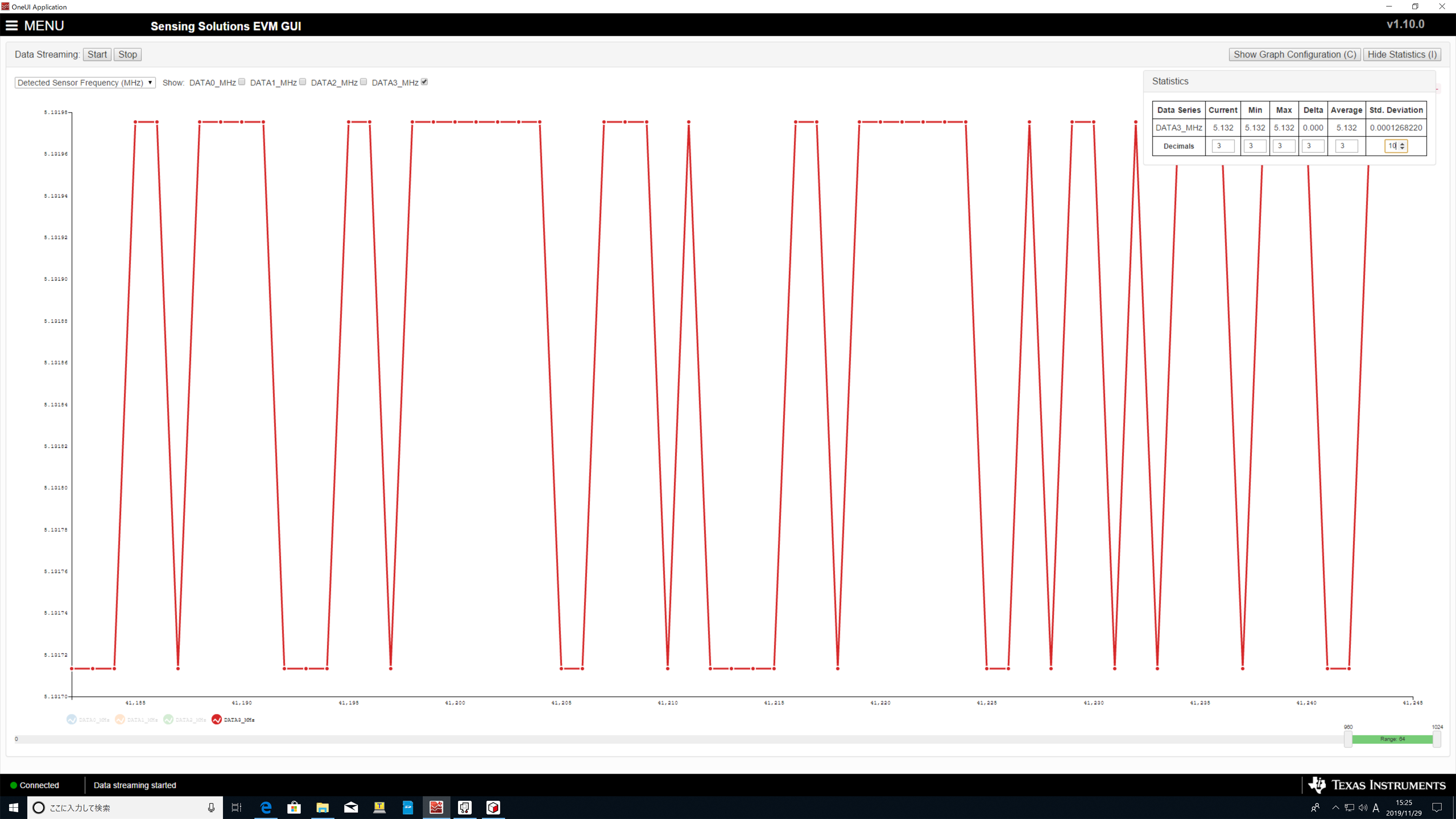I use FDC2214EVM for a touch sensor of a robot.
From the terminal of the evaluation board,
I extend the sensor electrode pad with a cable and paste it inside the robot.
I confirm changes in capacitance when the electrode pad is touched by hand from outside
When measuring using [Data Streaming] of GUI
It shows 53pF when not touching the sensor, and 0.1 ~ 0.5pF capacitance increases when touching from outside.
My concern is that the sensor is reacting, but this 0.1 ~ 0.5pF is probably too small.
Can you tell me because I don't know if it's weak?
Regards
<Conditions>


